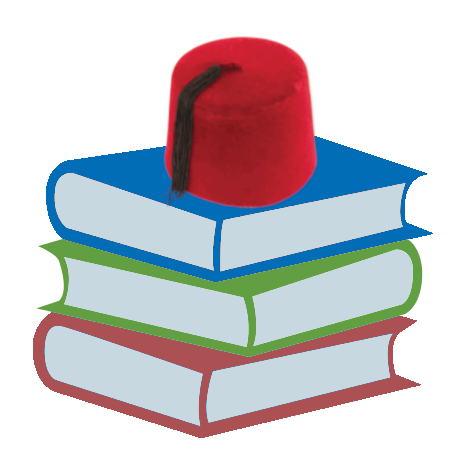

| Value | Coin |
|---|---|
| 5 millimes (Dourou) |
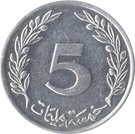 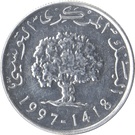
|
| 10 millimes |
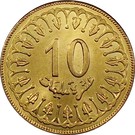 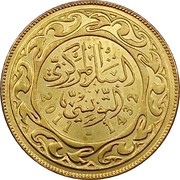
|
| 20 millimes |
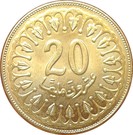 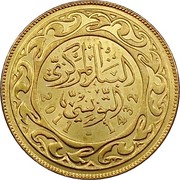
|
| 50 millimes |
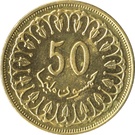 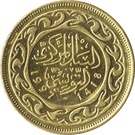
|
| 100 millimes |
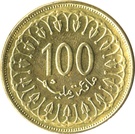 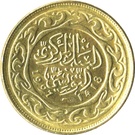
|
| 200 millimes |
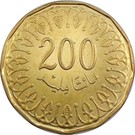 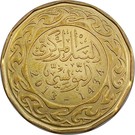
|
| 500 millimes |
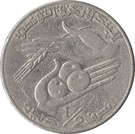 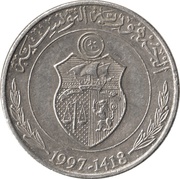
|
| 1 Dinar (Dinar) (1,000 millimes) |
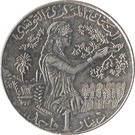 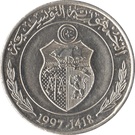
|
| 2 Dinars (Elfin) (2,000 millimes) |
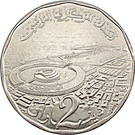 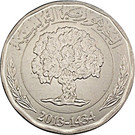
|
| 5 Dinars (5amsa-lef) (5,000 millimes) |
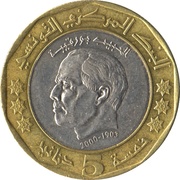 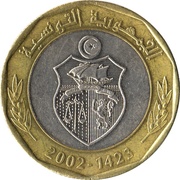
|
| Value | Bill | Description |
|---|---|---|
| 5 dinars (5amsa-lef) (5,000 millimes) |
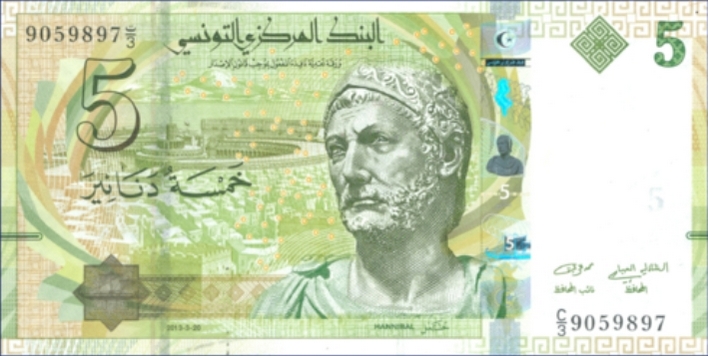 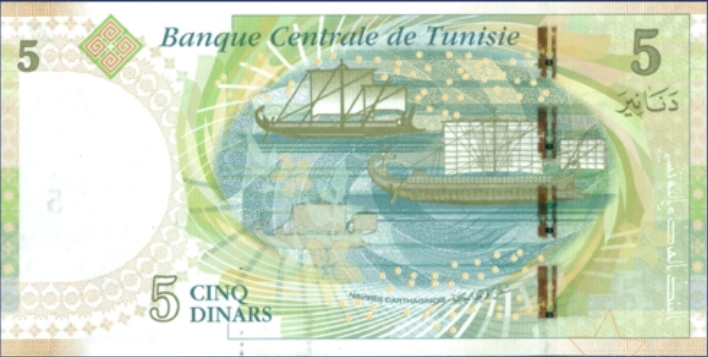
|
The front (obverse): Hannibal Barca (247 BC – 182 BC) was a Carthaginian general and statesman who commanded Carthage's main forces against the Roman Republic during the Second Punic War. He is widely considered to be one of the greatest military commanders in human history. |
| The back (reverse): Carthaginian Ships. |
||
| 10 dinars (3achra-lef) (10,000 millimes) |
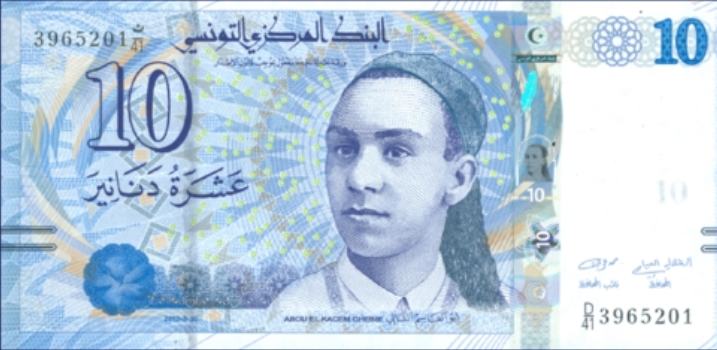 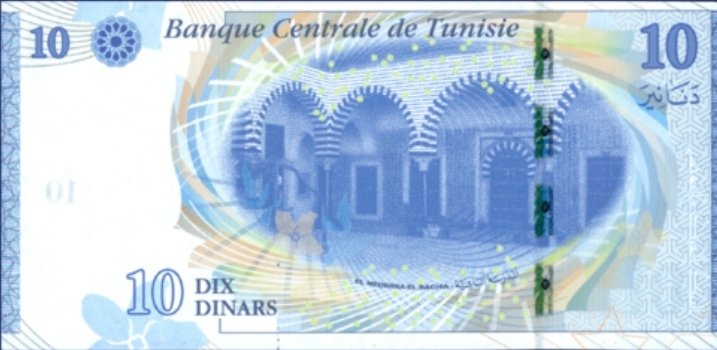
|
The front (obverse): Aboul-Qacem Echebbi (1909 – 1934) was a Tunisian poet. He is probably best known for writing the final two verses of the current National Anthem of Tunisia. |
| The back (reverse): Madrasa El Bachia is one of the madrasahs of the medina of Tunis, located in the Booksellers Street, near the Al-Zaytuna Mosque, and in front of the Guachachine Hammam. |
||
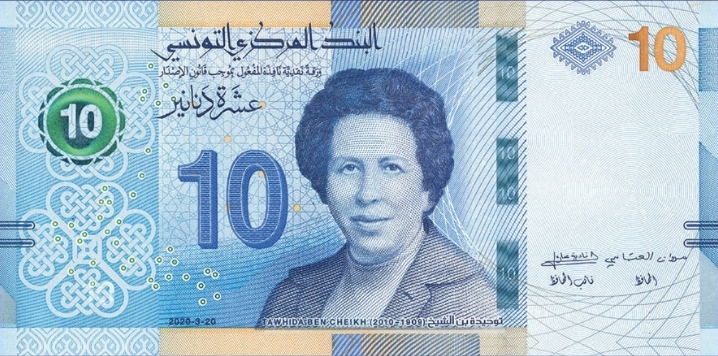 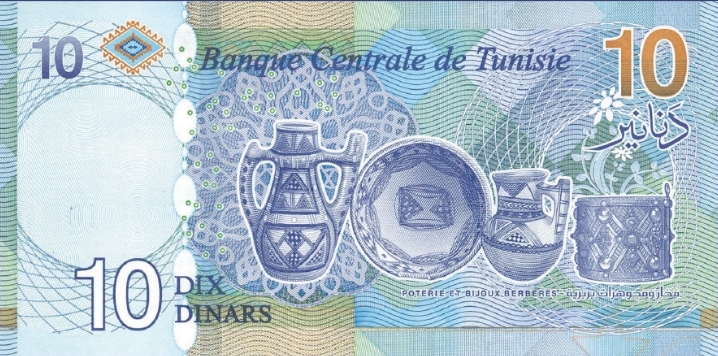
|
The front (obverse): Tewhida Ben Sheikh (1909 – 2010) was the first modern Tunisian woman in North Africa to become a physician. She was also a pioneer in women's medicine, in particular contraception and abortion access. |
|
| The back (reverse): Berber pottery and jewelry. |
||
| 20 dinars (3echrin-elf) (20,000 millimes) |
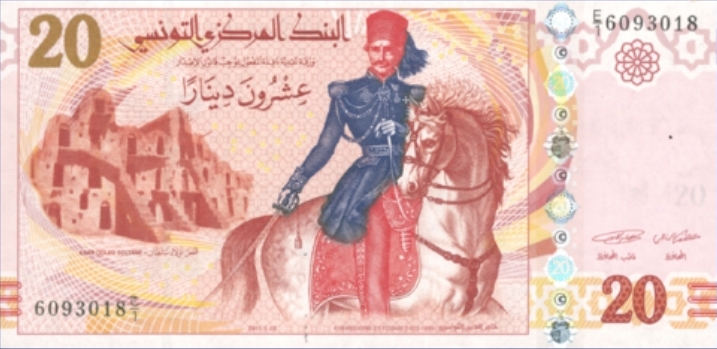 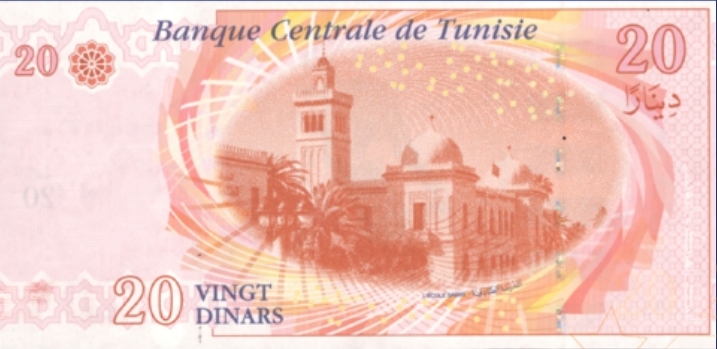
|
The front (obverse): Hayreddin Pasha (1820 – 1890) was an Ottoman-Tunisian statesman and reformer. First serving as Grand Vizier of the Beylik of Tunis, he later achieved the high post of Grand Vizier of the Ottoman Empire. He was a political reformer during a period of growing European ascendancy. |
| The back (reverse): Sadiki College, also known as Collège Sadiki, is a lycée (high school) in Tunis, Tunisia. It was established in 1875. Associations formed by its alumni played a major role in the early constitutionalist movement in the country. |
||
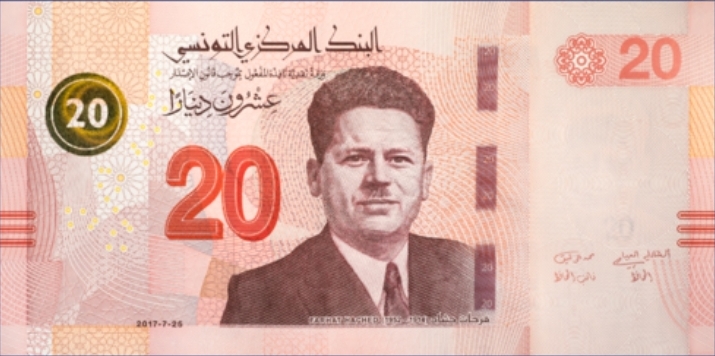 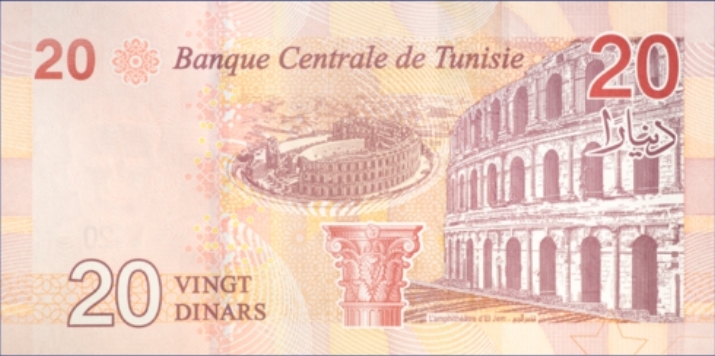
|
The front (obverse): Farhat Hached (1914 – 1952) was a Tunisian labor unionist and independence activist assassinated by the Main Rouge, a French terrorist organization operated by French foreign intelligence. |
|
| The back (reverse): The Amphitheatre of El Jem is an oval amphitheatre in the modern-day city of El Djem, Tunisia, formerly Thysdrus in the Roman province of Africa. It is listed by UNESCO since 1979 as a World Heritage Site. |
||
| 50 dinars (5amsin-elf) (50,000 millimes) |
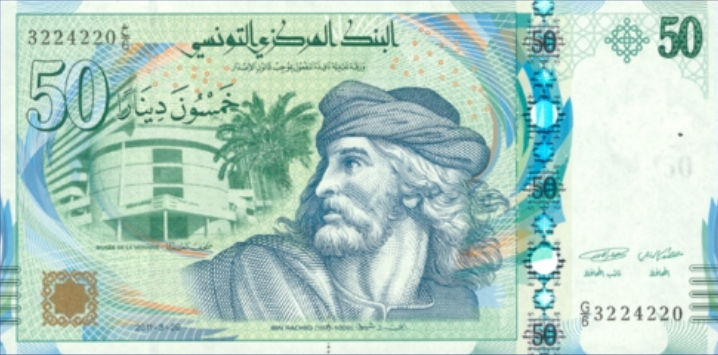 
|
The front (obverse): Ibn Rachiq (1000 - 1064) was a writer and a poet of Ifriqiya. |
| The back (reverse): Government Square al Kasbah. |